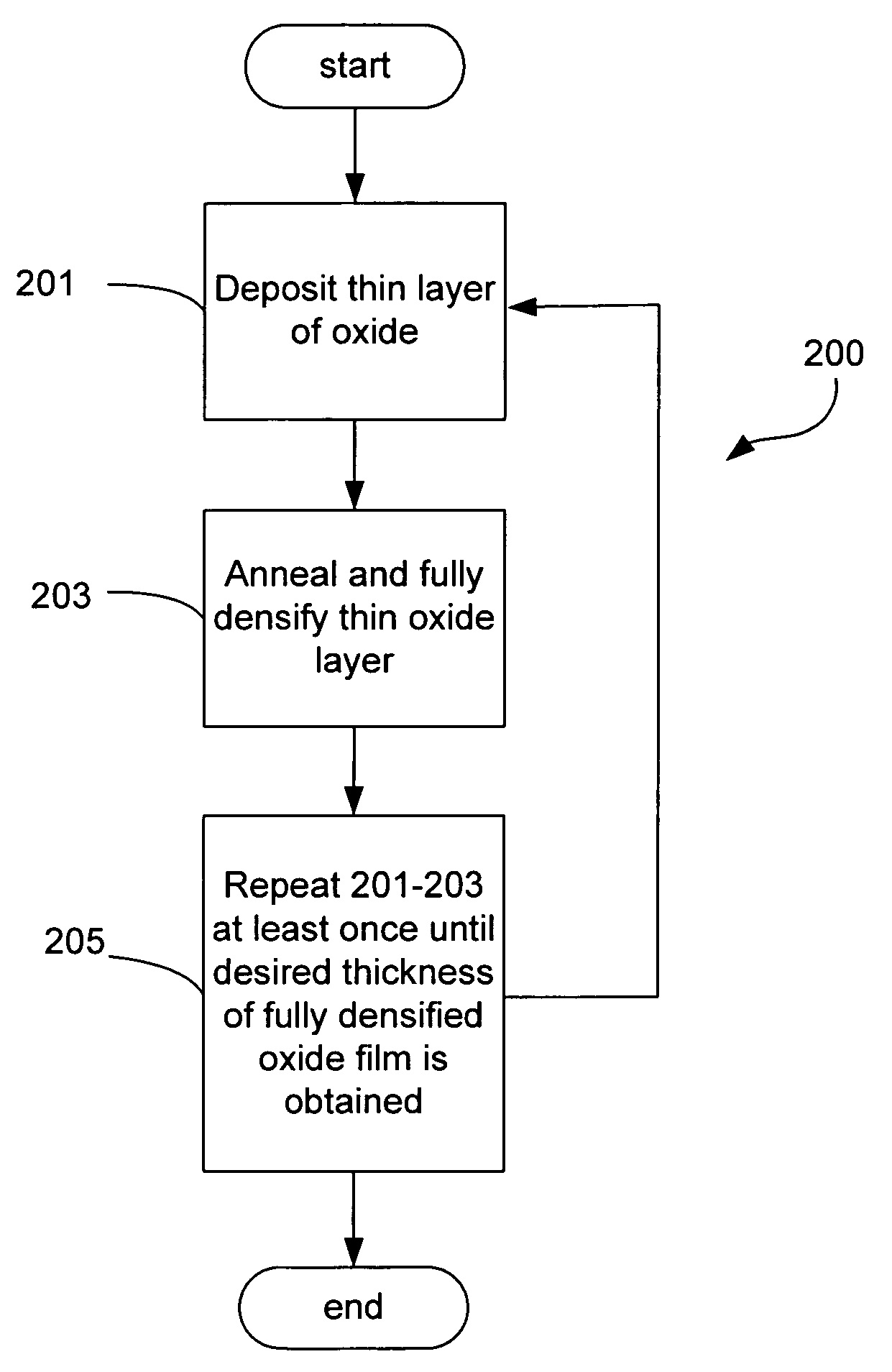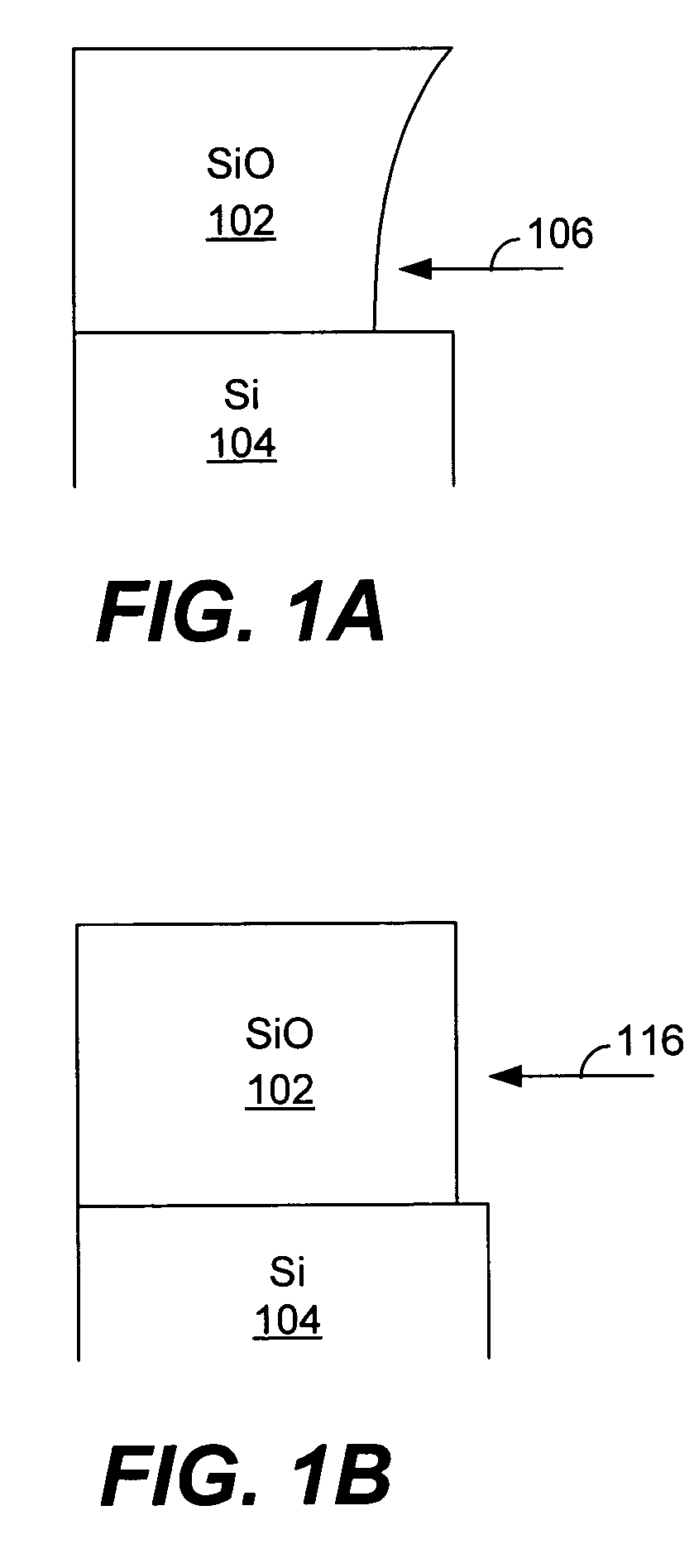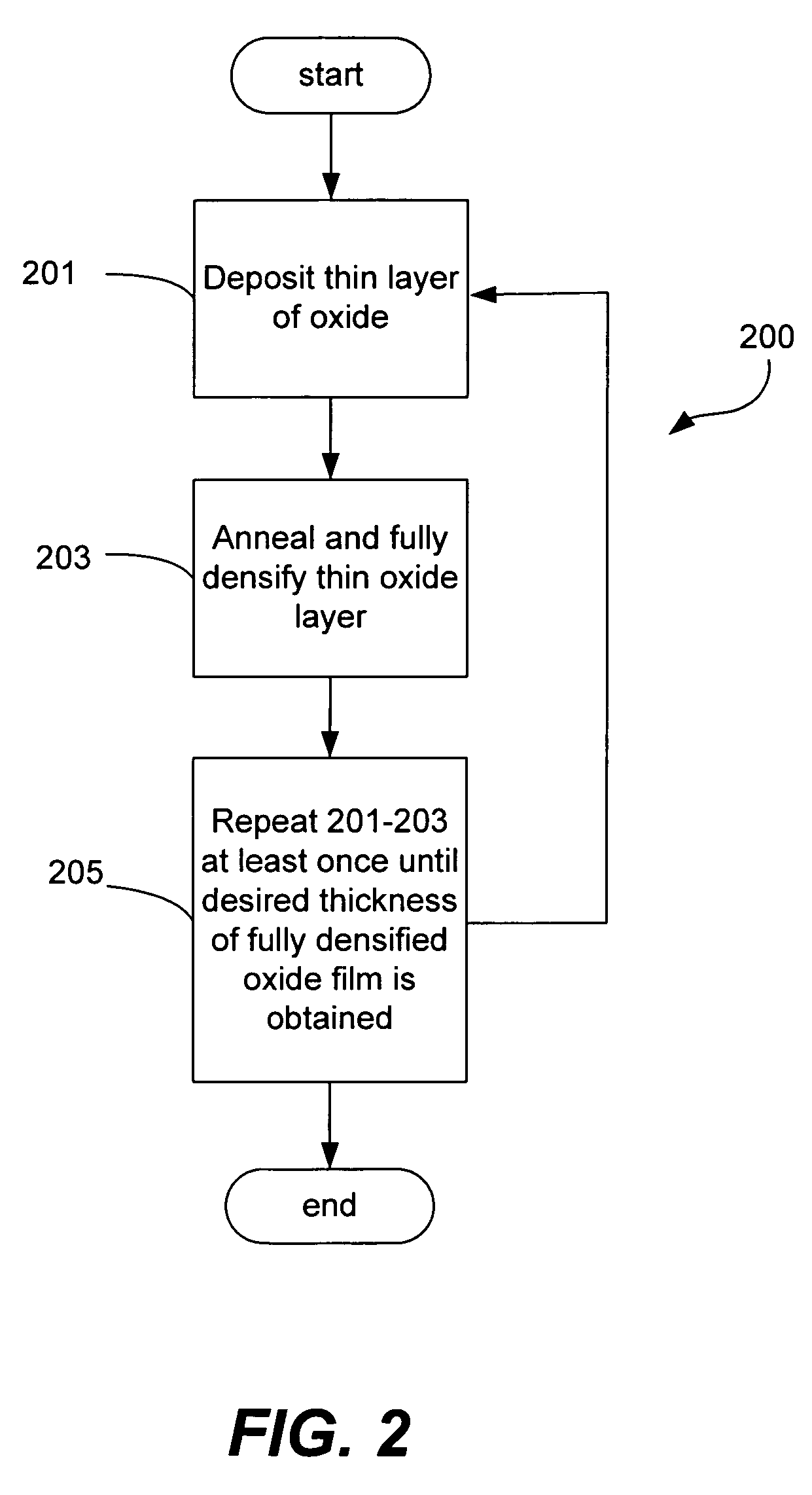Sequential deposition/anneal film densification method
- Summary
- Abstract
- Description
- Claims
- Application Information
AI Technical Summary
Benefits of technology
Problems solved by technology
Method used
Image
Examples
##p embodiment
RVD / HDP Embodiment
[0038]A preferred annealing process is high density plasma (HDP)-based. A high density plasma in an oxidizing environment can fully and uniformly densify thin dielectric films at low temperatures. This technique has the advantage of annealing while staying within the thermal budget constraints of temperature sensitive dielectric formation applications, e.g., PMD.
[0039]Generally, a RVD method involves sequentially depositing a plurality of atomic-scale films on a substrate surface by sequentially exposing and removing reactants to and from the substrate surface. An exemplary case of RVD using reactant gases A and B will now be used to illustrate principle operations of a RVD process in accordance with the present invention. First, gas A is injected into a chamber and the molecules of gas A are chemically or physically adsorbed to the surface of a substrate, thereby forming a “saturated layer” of A. Formation of a saturated layer is self-limiting in nature and repres...
example
[0082]The following example provides details relating to performance advantages of the present invention. It should be understood the following is representative only, and that the invention is not limited by the detail set forth in this example.
[0083]Annealing Efficiency
[0084]FIG. 7 shows the effect of film thickness on the efficiency of the densification (annealing) process. SiO2 films were deposited by RVD using a silicon precursor partial pressure below 10 Torr and a temperature of 230° C. Films were annealed by RTP at the temperatures indicated for at least 5 minutes at ambient pressure in a mixture of 30% steam and 70% N2. The films' wet etch rate, which is a measure of film density, was measured at the top and at the bottom of the stack. For the 5000 Å films, the difference is in the order of 40%, while for films 2000 Å thick the wet etch rate measurements were within 12% at temperatures above 700° C. This result indicates that the thinner films were more efficiently and unif...
PUM
 Login to View More
Login to View More Abstract
Description
Claims
Application Information
 Login to View More
Login to View More - R&D
- Intellectual Property
- Life Sciences
- Materials
- Tech Scout
- Unparalleled Data Quality
- Higher Quality Content
- 60% Fewer Hallucinations
Browse by: Latest US Patents, China's latest patents, Technical Efficacy Thesaurus, Application Domain, Technology Topic, Popular Technical Reports.
© 2025 PatSnap. All rights reserved.Legal|Privacy policy|Modern Slavery Act Transparency Statement|Sitemap|About US| Contact US: help@patsnap.com



